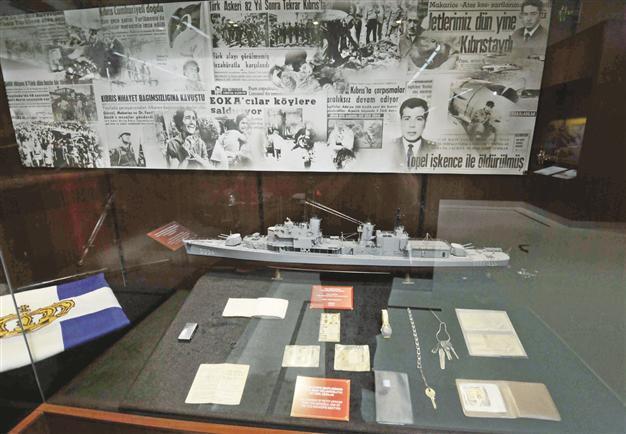Museum bears witness to Turkish maritime history
MERSİN - Anatolia News Agency

The museum displays mockups of naval vessels as well as over 600 artifacts reflecting the social, historical and technical development of the Turkish Naval Forces. AA Photo
A maritime museum in the southern province of Mersin is working to shed light on the maritime history of the late Ottoman Empire and the early Turkish Republic with hundreds of artifacts and books.
The Mersin Maritime Museum displays mockups of naval vessels including the Refah, the minesweeper Nusrat and the frigate Ertuğrul, as well as personal items that once belonged to a naval sergeant who was killed during Turkey’s intervention in Cyprus. It also includes the Piri Reis Library, which serves researchers with 1,000 books.
The museum opened in July 2011 with the support of the governor’s office and Yenişehir Municipality. Mersin has historically had a significant place in eastern Mediterranean trade, and the museum seeks to share that maritime and naval history with visitors, Mersin Maritime Museum Director Cmdr. Özgür Murat Olcay said. The museum, which features over 600 artifacts, also reflects the social, historical and technical development of the Turkish Naval Forces and hopes to communicate that history to civilians, especially children, Olcay said. “The idea of opening a museum in Mersin to showcase the Naval Forces and their loyalty to the city came up in 2008. Construction began on Sept. 16, 2009, and the museum opened to visitors on July 14, 2011.” The Mersin Maritime Museum is Turkey’s fourth such museum, after those in Istanbul, the northwestern province of Çanakkale and nearby İskenderun, Olcay said. The museum’s exhibition and meeting rooms are available for rent to the public for events, he added.
Museum welcomes donations “Any institution or establishment as well as the public can donate to the museum. Items including old newspapers, books, documents, photos, maps, films, objects, medallions, guns, and clothes reflecting the historical, social and cultural history of Mersin are welcomed at the museum,” Olcay said.
The first donation to the museum was the personal belongings of a sailor who was killed during the Cyprus intervention in 1974. The sailor’s family donated his personal effects including his wallet, identity card, ring, wristwatch, 20- and five-Turkish Lira banknotes, a key ring and a lighter. The museum’s main Barbaros Exhibition Hall displays historical objects and artifacts related to maritime history, while the interactive Nusret Hall presents displays about the naval victory at Preveze, the galleon Mahmudiye, the Crimean War, the minesweeper Nusrat, and the naval ships Yavuz and Alemdar.
The Şehit Lt. Caner Gönyeli Hall serves as an art gallery, and the Ertuğrul Hall as a display room for rotating exhibits. The museum also includes the Cezayirli Gazi Hasanpaşa Hall, where children will receive maritime education, and the Piri Reis Library, offering documents and books on the Turkish Naval Forces and maritime issues. There is also an open exhibition area in the museum’s east wing.
The museum is open every day except Monday and Tuesday, from 9 a.m. to 5 p.m. The entrance fee is 1.30 liras for students and four liras for other visitors.
